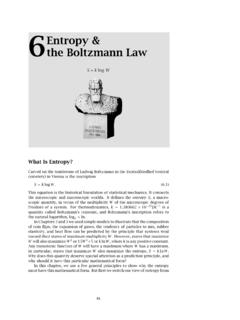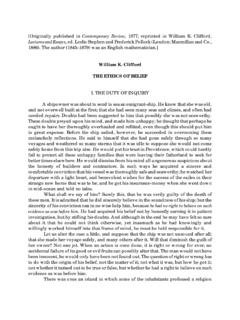Transcription of Market Wizards - Brandeis University
1 Market Wizards Study Notes by Zhipeng Yan Market Wizards Interviews with Top Traders Jack D. Schwager Part I FUTURES AND 2 Michael Marcus: Blighting Never Strikes 2 Bruce Kovner: the World 4 Richard Dennis: A Legend 6 Paul Tudor Jones: The Art of Aggressive 7 Gary Bielfeldt: Yes, They do Trade T-Bonds in 9 Ed Seykota: Everybody Gets What They 9 Larry Hite: Respecting 11 Part II MOSTLY 12 Michael Steinhardt: The Concept of Variant 12 William O Neil: The Art of Stock 12 David Ryan: Stock Investment as a Treasure 15 Marty Schwartz.
2 Champion 16 Part III A LITTLE BIT OF 17 James R. Rogers, Jr.: Buying Value and Selling 17 Mark Weinstein: High-Percentage 18 Part IV THE VIEW FROM THE 20 Brian Gelber: Broker Turned 20 Tom Baldwin: The Fearless Pit 20 Tony Saliba: One-lot 21 Part V THE PSYCHOLOGY OF 21 Dr. Van K. Tharp: The Psychology of 21 1 Market Wizards Study Notes by Zhipeng Yan Part I FUTURES AND CURRENCIES Michael Marcus: Blighting Never Strikes Twice 1. Start as a commodity research analyst, then a floor trader, then work for Commodities Corporation.
3 He attributes his success to Ed Seykota, who taught him how to cut losses, as well as the importance of riding winners. Ed is a trend follower, who utilized classic trading principles. Ed said, The trend is down, and I m going to stay short until the trend changes. He learned patience from him in the way he followed the trend. 2. Plywood price case: it was theoretically frozen at $110 per 1000 square feet. One day, the futures price was trading 20 cents over the legal ceiling. So I started calling around to see what was going to happen, but nobody seemed to know.
4 I used the following reasoning: if they let it trade over $110 today, they might let it trade anywhere. So I bought one contract. Ultimately, plywood went to $200. The futures Market functioned as a supply of last resort to users who couldn t get supplies elsewhere. Basically, it created a two-tiered Market , a sort of legal black Market . 3. Things leaned from the floor: you develop an almost subconscious sense of the Market on the floor. You learn to gauge price movement by the intensity of the voices in the ring.
5 I learned the importance of intraday chart points, such as earlier daily highs. At key intraday chart points, I could take much larger positions than I could afford to hold, and if it doesn t work immediately, I would get out quickly. My trading in those days was a bit like being a surfer. I later used that surfing technique as a desk trader. Although that approach worked real well then, I don t think it would work as well in today s markets. 4. The best trades are the ones in which you have all three things going for you: fundamentals, technicals, and Market tone.
6 First, the fundamentals should suggest that there is an imbalance of supply and demand, which could result in a major move. Second, the chart must show that the Market is moving in the direction that the fundamental suggest. Third, when news comes out, the Market should act in a way that reflects the right psychological tone. For example, a bull Market should shrug off bearish news and respond vigorously to bullish news. If you can restrict your activity to only those types of trades, you have to make money, in any Market , under any circumstances.
7 All my profits come from the trades that met the criteria. The other trades broke even and kept me amused. The thing that saved me was that when a trade met all my criteria, I would enter five to six times the position size I was doing on the other trades. 5. I believe that the era of trend following is over until and unless there is a particular imbalance in a Market that overrides everything else. Another exception would be if we were to enter a major inflationary or deflationary environment. One reason we don t have many good trends anymore is that the central banks are preventing currency moves from getting out of hand by taking the other side the trend.
8 6. I try to avoid the currencies, because I feel it is a totally political situation; you have to determine what the central banks are going to do. During late 1978, the dollar was getting battered, falling to new lows every day. One day, we noticed 2 Market Wizards Study Notes by Zhipeng Yan that the dollar got mysteriously strong. There was an intense price movement that couldn t be explained by any known information. We just bailed out of our long currency positions like crazy. That weekend, President Carter announced a dollar support program.
9 That situation illustrates one of the principles we believed in namely, that the big players, including the governments, would always tip their hand. If we saw a surprise price move against us that we didn t understand, we often got out and looked for the reason later. I believe the European central banks are notified about major changes we are going to make, and they often act ahead of US policy announcements. Consequently, the price move shows up in Europe first, even if it is because of something we initiate.
10 7. One of my rules was to get out when the volatility and the momentum became absolutely insane. One way I had of measuring that was with limit days. In those days, we used to have a lot of situations when a Market would go limit-up for a number of consecutive days. On the third straight limit-up day, I would begin to be very, very cautious. I would almost always get out on the fourth limit-up day. And if I had somehow survived with any part of my position that long, I had a mandatory rule to get out on the fifth limit-up day.






![LINEAR ALGEBRA MIDTERM [EXAM A] - Brandeis University](/cache/preview/2/a/5/a/8/6/f/b/thumb-2a5a86fbead498bbe4749596c75df645.jpg)


